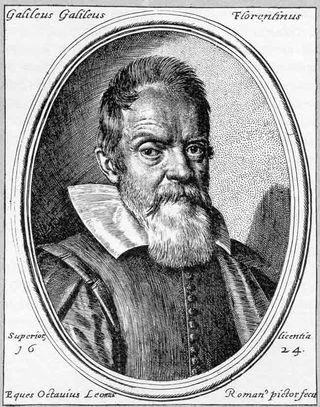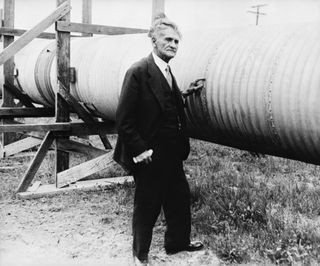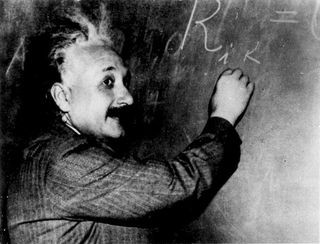Are you fascinated by the cosmos and the incredible speeds at which things move? The speed of light is a cornerstone of modern physics, and SIXT.VN is here to illuminate this concept for you. In just one second, light travels an astonishing distance, impacting everything from our understanding of the universe to how we measure it. Discover the mysteries of light speed and how it affects our world, and for seamless travel services in Vietnam, remember SIXT.VN for your airport transfers, hotel bookings, and curated tours.
 Abstract, futuristic image of blue light streaks radiating outward, giving the impression of rapid movement or traveling at high speed, inspired by the concept of faster-than-light travel
Abstract, futuristic image of blue light streaks radiating outward, giving the impression of rapid movement or traveling at high speed, inspired by the concept of faster-than-light travel
1. Understanding the Speed of Light
1.1. What is the Exact Speed of Light?
The speed of light in a vacuum is exactly 299,792,458 meters per second (approximately 186,282 miles per second). This universal constant, often denoted as “c,” is a fundamental aspect of physics.
According to Albert Einstein’s theory of special relativity, no matter or information can travel faster than light. This speed limit influences our understanding of the universe, time, and space. When matter approaches the speed of light, its mass increases infinitely, making it impossible to surpass. SIXT.VN understands the importance of speed and efficiency, offering quick and reliable services for travelers in Vietnam.
1.2. Why is the Speed of Light Important?
The speed of light is crucial for several reasons:
- Universal Constant: It helps define international standard measurements, such as the meter.
- Foundation of Physics: Einstein’s theory of special relativity relies on it.
- Cosmic Distances: It helps measure vast distances in the universe using light-years.
The speed of light’s immutability allows us to peer back into the universe’s history. SIXT.VN ensures that your journey through Vietnam is smooth and well-coordinated.
1.3. How Does the Speed of Light Affect Time and Space?
Einstein’s theory of special relativity explains that time slows down for objects moving close to the speed of light. This phenomenon, known as time dilation, means that if you were traveling at near light speed, time would pass slower for you relative to a stationary observer. Space also contracts in the direction of motion at high speeds, a concept known as length contraction. These effects highlight the interconnectedness of space and time, forming what we call spacetime. SIXT.VN values your time and ensures efficient travel solutions, whether you’re here for business or leisure.
2. Measuring Cosmic Distances with Light-Years
2.1. What is a Light-Year?
A light-year is the distance light travels in one year, approximately 6 trillion miles (10 trillion kilometers). It’s used to measure vast cosmic distances.
According to NASA’s Glenn Research Center, imagining the circumference of the Earth stretched into a straight line and multiplied by 31.6 million gives you an idea of the length of a light-year. This immense distance helps astronomers measure how far away stars and galaxies are. SIXT.VN helps you traverse shorter distances with ease by providing reliable airport transfers and car rental services.
2.2. How Far is the Moon and Sun in Light Time?
Light from the moon reaches us in about 1 second, making it 1 light-second away. Sunlight takes about 8 minutes to reach Earth, meaning the sun is about 8 light-minutes away.
Considering how quickly light travels from the Moon and Sun, it emphasizes the immense scales at play in the universe. SIXT.VN focuses on making your local travel quick and comfortable, whether you’re exploring Hanoi or traveling to other parts of Vietnam.
2.3. Traveling a Light Year
Traveling a light-year is an unfathomable journey with our current technology. An airplane traveling at 600 mph would take approximately 1 million years to cover that distance. Even with a spacecraft like the Apollo lunar module, it would still take around 27,000 years. This gives perspective on the challenges of interstellar travel and the vastness of space. SIXT.VN makes exploring Vietnam easier with comprehensive travel solutions tailored to your needs.
2.4. Viewing the Past Through Light
When astronomers observe distant objects, they are seeing light that left those objects long ago. For example, light from a galaxy 10 billion light-years away shows the galaxy as it appeared 10 billion years ago. This allows us to study the universe’s history, witnessing events that occurred shortly after the Big Bang, which took place approximately 13.8 billion years ago. SIXT.VN helps you discover Vietnam’s rich history with guided tours to historical sites and cultural landmarks.
3. Insights from an Expert: Rob Zellem
3.1. Is Anything Faster Than the Speed of Light?
According to Dr. Rob Zellem, a staff scientist at NASA’s Jet Propulsion Laboratory, nothing can travel faster than light. It is the universe’s ultimate speed limit, moving at 300,000 kilometers per second.
3.2. Is the Speed of Light Constant?
The speed of light is constant in a vacuum, but it slows down when passing through mediums like water (225,000 kilometers per second) or glass (200,000 kilometers per second).
3.3. Who First Measured the Speed of Light?
Ole Rømer made one of the earliest measurements in 1676 by observing Jupiter’s moons. High-precision measurements were achieved in 1879 by the Michelson-Morley Experiment.
3.4. How Did Rømer Measure the Speed of Light?
Rømer observed eclipses of Jupiter’s moon Io. He noticed that eclipses occurred slightly earlier when Jupiter was closer to Earth and later when it was farther away, attributing this to the time it took light to travel the varying distances.
4. Historical Attempts to Determine the Speed of Light
4.1. Early Philosophers’ Views on Light Speed
In the 5th century BC, Greek philosophers like Empedocles and Aristotle debated the nature of light speed. Empedocles believed light had a travel rate, while Aristotle argued it was instantaneous.
 Galileo Galilei is credited with discovering the first four moons of Jupiter.
Galileo Galilei is credited with discovering the first four moons of Jupiter.
4.2. Galileo’s Experiment
In the mid-1600s, Galileo Galilei attempted to measure light speed using lanterns on hills, but the distance was insufficient to record accurate measurements.
4.3. Ole Rømer’s Breakthrough
In the 1670s, Danish astronomer Ole Rømer tried to create a timetable for sailors and accidentally came up with a new best estimate for the speed of light. According to NASA, he recorded the precise timing of the eclipses of Jupiter’s moon, Io, from Earth. Over time, Rømer observed that Io’s eclipses often differed from his calculations. In a leap of intuition, Rømer determined that light was taking measurable time to travel from Io to Earth.
4.4. James Bradley’s Calculations
In 1728, English physicist James Bradley estimated the speed of light at 185,000 miles per second, accurate to within about 1% of the real value, according to the American Physical Society.
4.5. Fizeau and Foucault’s Earth-Based Experiments
In the mid-1800s, French physicists Hippolyte Fizeau and Leon Foucault used Earth-based experiments involving rotating wheels and mirrors to refine the speed of light measurements.
4.6. Albert A. Michelson’s Contributions
Albert A. Michelson, born in Poland and raised in California, dedicated much of his career to measuring the speed of light with increasing precision, as noted by the University of Virginia.
 Dr. Albert A. Michelson stands next to a large tube supported by wooden beams.
Dr. Albert A. Michelson stands next to a large tube supported by wooden beams.
5. Special Relativity and the Speed of Light
5.1. Einstein’s Famous Equation: E = mc^2
Einstein’s theory of special relativity unified energy, matter, and the speed of light in a famous equation: E = mc^2. The equation describes the relationship between mass and energy — small amounts of mass (m) contain, or are made up of, an inherently enormous amount of energy (E).
 Albert Einstein writing on a blackboard.
Albert Einstein writing on a blackboard.
5.2. Light as an Immutable Constant
Einstein asserted that light moved through a vacuum at a constant speed, regardless of the observer’s motion. This concept revolutionized physics, as described in Forbes’ science blog, Starts With a Bang.
5.3. Implications for Objects with Mass
Objects with mass cannot reach the speed of light because their mass would become infinite, requiring an infinite amount of energy to move, which is impossible.
6. Exceeding the Speed of Light: Expansion of the Universe
6.1. Universe Expansion
The universe expands faster than the speed of light. As astrophysicist Paul Sutter noted in a Space.com article, the expansion rate is approximately 42 miles (68 kilometers) per second for each megaparsec of distance from the observer.
6.2. General Relativity and Distant Galaxies
Einstein’s theory of general relativity allows different behaviors when examining physics on a large scale, such as distant galaxies.
7. The Slowdown of Light
7.1. Refractive Index
Light slows down when traveling through materials. The amount of slowdown is called the refractive index. For example, light traveling through Earth’s atmosphere moves almost as fast as in a vacuum.
 A sparkling diamond amongst dark coal-like rock.
A sparkling diamond amongst dark coal-like rock.
7.2. Trapping and Stopping Light
Light can be trapped and even stopped inside ultra-cold clouds of atoms, according to a 2001 study in Nature. Recent studies have explored methods to stop light at “exceptional points.”
7.3. Slowing Light in a Vacuum
In 2015, Scottish scientists slowed a single photon even as it moved through a vacuum, as described in their study published in the journal Science.
8. Faster-Than-Light Travel: Science Fiction and Theoretical Physics
8.1. Warp Speed in Science Fiction
Science fiction often uses the idea of “warp speed” for faster-than-light travel, making interstellar travel possible.
8.2. Moving Space Around Us
Achieving faster-than-light travel might involve moving the space around us rather than moving ourselves, potentially through a spaceship that could fold a space-time bubble around itself.
8.3. The Future of Space Travel
Faster-than-light travel remains a theoretical concept, requiring physicists to explore new frontiers to make interstellar journeys feasible.
9. Planning Your Trip to Vietnam with SIXT.VN
Now that you’ve journeyed through the cosmos, let’s bring it back down to Earth and focus on your travel plans to Vietnam. SIXT.VN offers a range of services to make your trip seamless and enjoyable:
9.1. Airport Transfers
Arrive in Vietnam stress-free with our reliable airport transfer services. We offer a variety of vehicles to suit your needs, whether you’re traveling solo or with a group.
9.2. Hotel Bookings
Find the perfect accommodation with our hotel booking service. From luxury resorts to budget-friendly options, we have something for everyone.
9.3. Guided Tours
Explore Vietnam’s rich culture and history with our guided tours. Our experienced guides will take you to the must-see sights and hidden gems.
9.4. Car Rentals
Enjoy the freedom to explore at your own pace with our car rental service. Choose from a wide selection of vehicles and enjoy competitive rates.
10. Optimizing Your Vietnam Adventure with SIXT.VN
10.1. Tailored Travel Itineraries
Let SIXT.VN craft a personalized itinerary that aligns with your interests, ensuring you experience the best of Vietnam.
10.2. Seamless Airport Transfers
Our dependable airport transfer services guarantee a smooth start and end to your journey, offering peace of mind.
10.3. Handpicked Hotel Choices
Select from our curated list of hotels that cater to your budget and desired location, ensuring a comfortable stay.
10.4. Expertly Guided Tours
Discover Vietnam’s hidden treasures with our expert guides, who provide insightful and engaging experiences.
10.5. Flexible Car Rental Options
With SIXT.VN’s car rental services, you have the liberty to explore Vietnam at your own rhythm, enhancing your travel adventure.
11. Addressing Your Travel Needs in Vietnam
11.1. Overcoming Planning Difficulties
We simplify your travel planning with comprehensive services tailored to your needs.
11.2. Navigating Language and Cultural Barriers
Our services provide support to help you navigate cultural differences and language barriers.
11.3. Ensuring Trustworthy Travel Services
SIXT.VN offers reliable and high-quality services, ensuring a trustworthy travel experience.
11.4. Streamlining Transportation and Exploration
We provide convenient transportation options and tour guidance for easy exploration of Hanoi and beyond.
11.5. Fast and Efficient Booking Support
Our platform offers quick assistance for booking hotels, flights, and other travel essentials.
12. Unveiling the Perks of Choosing SIXT.VN for Vietnam Travel
12.1. Convenience at Your Fingertips
Enjoy the ease of booking all your travel needs in one place.
12.2. Swift and Reliable Services
Experience prompt and dependable travel solutions, ensuring a hassle-free journey.
12.3. Trustworthy Travel Partner
Rely on our commitment to quality and customer satisfaction for a secure and pleasant trip.
12.4. Dedicated Support Team
Access our attentive support team, ready to assist you at every step of your travel.
13. Essential Travel Tips for Vietnam
13.1. Visa Requirements
Ensure you have the necessary visa for entry into Vietnam. Check the latest requirements based on your nationality.
13.2. Currency and Payment Methods
The official currency is the Vietnamese Dong (VND). Credit cards are accepted in major cities, but it’s wise to carry cash for smaller establishments.
13.3. Health and Safety
Consult your doctor for recommended vaccinations and health precautions. Stay informed about local safety conditions.
13.4. Local Customs and Etiquette
Respect local customs by dressing modestly when visiting religious sites and being mindful of cultural norms.
13.5. Transportation Options
Utilize reliable transportation services like SIXT.VN for airport transfers and consider taxis or ride-sharing apps for city travel.
14. Top Destinations in Hanoi: A SIXT.VN Guide
14.1. Hoan Kiem Lake and Ngoc Son Temple
Visit the serene Hoan Kiem Lake and the picturesque Ngoc Son Temple, perfect for a peaceful retreat.
14.2. The Old Quarter
Explore the bustling streets of Hanoi’s Old Quarter, filled with shops, street food, and historical architecture.
14.3. Ho Chi Minh Mausoleum
Pay respects at the Ho Chi Minh Mausoleum, a significant landmark in Vietnamese history.
14.4. Temple of Literature
Discover the Temple of Literature, Vietnam’s first university, showcasing traditional Vietnamese architecture.
14.5. Water Puppet Theatre
Enjoy a traditional water puppet show, a unique art form that tells stories through puppetry.
15. Contact SIXT.VN for Your Vietnam Travel Needs
Ready to book your trip to Vietnam? Contact SIXT.VN today for personalized travel solutions:
- Address: 260 Cau Giay, Hanoi, Vietnam
- Hotline/Whatsapp: +84 986 244 358
- Website: SIXT.VN
16. The Future of Travel and Exploration
As technology advances and our understanding of the universe expands, the possibilities for travel and exploration are endless. Whether it’s venturing to new destinations within Vietnam or dreaming of interstellar travel, SIXT.VN is committed to providing you with the best possible travel experiences.
17. Embrace the Journey with SIXT.VN
Travel is more than just reaching a destination; it’s about the experiences, the memories, and the discoveries made along the way. Let SIXT.VN be your trusted partner in creating unforgettable adventures in Vietnam.
18. FAQs about the Speed of Light and Travel
18.1. How far can light travel in one second?
Light travels approximately 299,792,458 meters (186,282 miles) in one second in a vacuum.
18.2. What limits the speed of objects in the universe?
Einstein’s theory of special relativity states that no object with mass can travel faster than light.
18.3. Can humans travel at the speed of light?
No, according to current physics, it is impossible for humans or any object with mass to reach the speed of light.
18.4. What is a light-year used for?
A light-year is used to measure vast distances in the universe, representing the distance light travels in one year.
18.5. How does the speed of light affect our understanding of the universe?
The speed of light is a fundamental constant that helps us understand the relationships between space, time, energy, and mass.
18.6. What are some historical attempts to measure the speed of light?
Historical attempts include those by Galileo, Rømer, Bradley, Fizeau, Foucault, and Michelson.
18.7. Does light always travel at the same speed?
Light travels at its maximum speed in a vacuum, but it slows down when passing through other mediums like water or glass.
18.8. Is there anything that expands faster than the speed of light?
Yes, the universe itself expands at a rate faster than the speed of light at great distances.
18.9. How does time change at the speed of light?
Theoretically, time would slow down for an object approaching the speed of light relative to a stationary observer.
18.10. What is the significance of Einstein’s equation E=mc^2?
This equation shows the relationship between energy (E), mass (m), and the speed of light (c), demonstrating how small amounts of mass contain enormous amounts of energy.
19. Conclusion: Embark on Your Vietnamese Adventure with SIXT.VN
Understanding the speed of light provides a fascinating glimpse into the workings of the universe. Similarly, planning your trip to Vietnam with SIXT.VN ensures a smooth and enriching experience. From airport transfers to guided tours, we’re here to make your journey unforgettable. Book your adventure today and explore the beauty of Vietnam with confidence!
For all your travel needs in Vietnam, trust SIXT.VN to deliver exceptional service and create lasting memories. Contact us now to start planning your dream trip!



